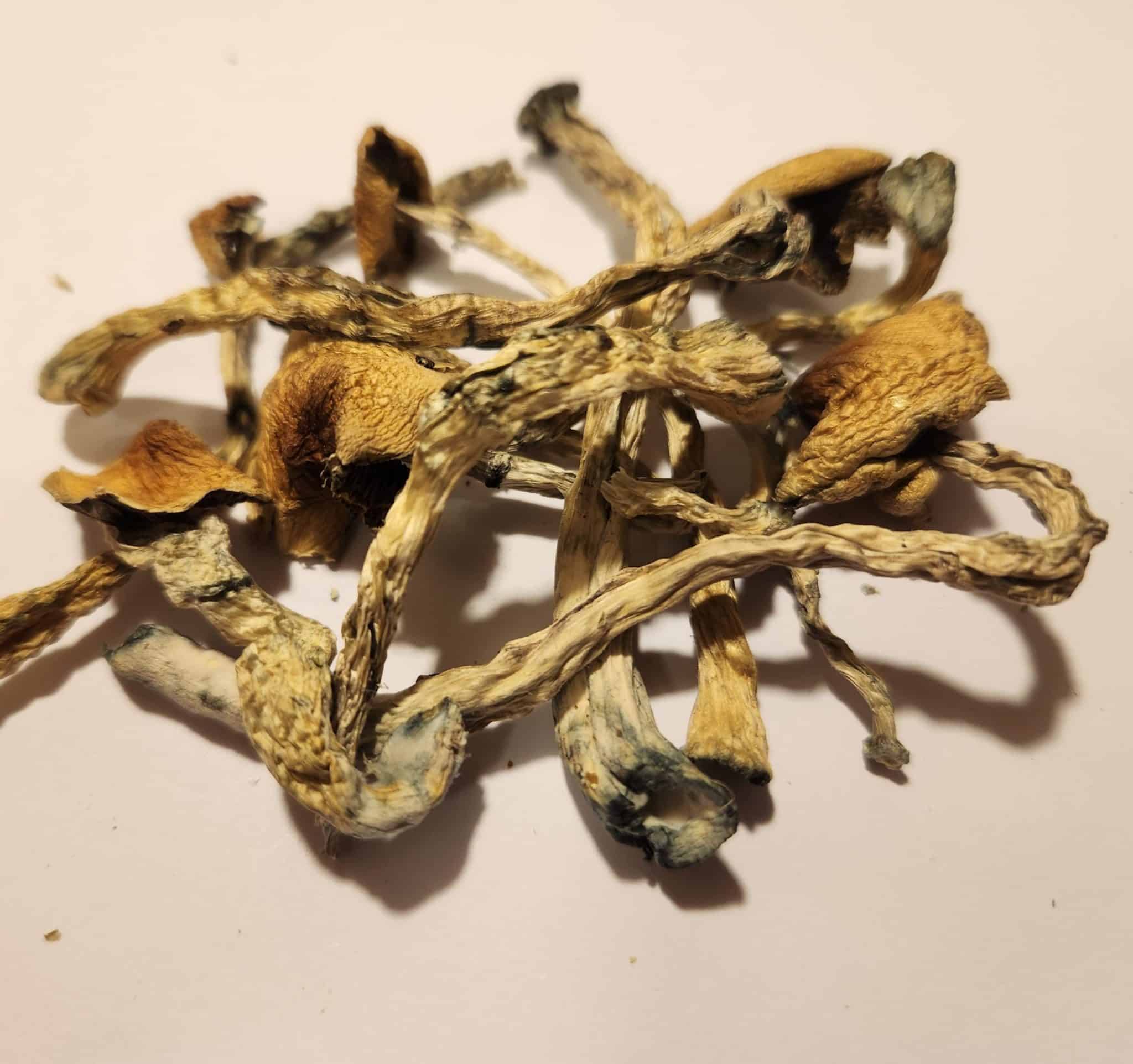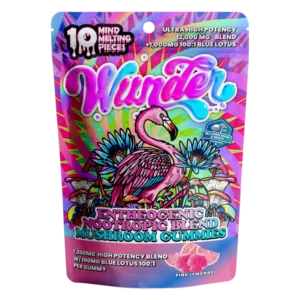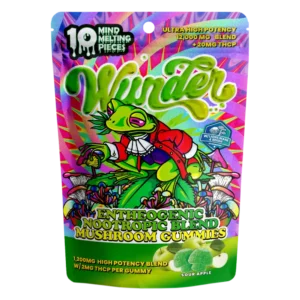The Mystique of Amazonian Magic Mushrooms
Deep within the verdant expanses of the Amazon rainforest, a variety of magic mushrooms flourish, each bearing secrets of ancient wisdom and natural potency. Known collectively as Amazonian Magic Mushrooms, these fungi have played a pivotal role in the spiritual and medicinal practices of indigenous tribes for generations. Their use, shrouded in ritual and reverence, has transcended cultural boundaries, sparking interest in the modern world of psychedelic research and alternative therapies.
The term “magic mushrooms” typically refers to species containing the psychoactive compound psilocybin, which, when ingested, is converted into psilocin—the substance responsible for the mind-altering effects. However, Amazonian Magic Mushrooms are unique due to their diverse range of bioactive compounds and the distinct ecological conditions under which they grow. They offer users a transformative experience that can lead to heightened introspection, creativity, and spiritual insights.
For further background on the renaissance of psychedelic research, consider visiting the Multidisciplinary Association for Psychedelic Studies (MAPS) and Erowid’s Mushroom Vault.
Taxonomy and Natural Habitat
Classification and Identification
Amazonian Magic Mushrooms belong predominantly to the genus Psilocybe, although several species from related genera may also be present in the region. These fungi are characterized by their relatively small size, distinctive conical or bell-shaped caps, and often a slight bluish tint on bruising—a hallmark of psilocybin oxidation.
- Kingdom: Fungi
- Division: Basidiomycota
- Class: Agaricomycetes
- Order: Agaricales
- Family: Hymenogastraceae (commonly for Psilocybe)
- Genus: Psilocybe and related genera
- Species: Varies by region; some commonly cited include Psilocybe cubensis, Psilocybe caerulescens, and other endemic species unique to the Amazon basin.
DNA barcoding and molecular phylogenetic studies are continuously refining our understanding of these species. For more detailed taxonomic information, resources such as the Mycological Society of America and Fungi Magazine provide excellent overviews.
Natural Habitat and Ecological Niche
Amazonian Magic Mushrooms thrive in the humid, nutrient-rich soils of the Amazon rainforest. Their natural habitat is characterized by:
- High Humidity and Temperature: The tropical climate of the Amazon, with consistent rainfall and warm temperatures, provides ideal conditions for fungal growth.
- Organic-Rich Substrate: These mushrooms often grow on decaying plant matter, decomposing wood, and sometimes in dung, which supplies the organic nutrients necessary for their development.
- Biodiversity Hotspot: The complex ecosystem of the Amazon rainforest supports a vast array of organisms, and the symbiotic relationships between fungi and plants are critical for nutrient cycling.
- Seasonal Fruiting: While many species fruit during the rainy season, variations exist depending on local microclimates and environmental conditions.
For an exploration of rainforest ecology and fungal biodiversity, see The Amazon Conservation Association and The Rainforest Foundation.
Traditional Uses and Cultural Significance
Indigenous Rituals and Shamanism
For centuries, indigenous peoples of the Amazon have utilized magic mushrooms in sacred rituals and healing ceremonies. Shamanic practices often involve the ingestion of these fungi to facilitate:
- Spiritual Journeys: Participants seek to commune with the spirit world, gain visions, and receive guidance from ancestral entities.
- Healing and Divination: Mushrooms are used to diagnose and treat illnesses, as well as to foretell future events or understand the underlying causes of personal or communal issues.
- Community Bonding: Ceremonial use of magic mushrooms reinforces social ties and maintains cultural traditions that have been passed down through generations.
Ethnobotanical studies, such as those detailed by Richard Evans Schultes and other anthropologists, provide rich insights into the historical significance of these practices.
Modern Perspectives and Psychedelic Renaissance
In recent decades, a global resurgence in psychedelic research has spotlighted the therapeutic potential of psilocybin. Modern clinical studies have revealed that controlled administration of psilocybin can help alleviate conditions such as depression, anxiety, and post-traumatic stress disorder (PTSD). Although much of this research originates outside the Amazon, the traditional knowledge embedded in Amazonian practices offers valuable context and wisdom.
For further reading on the modern applications of psychedelics, the Multidisciplinary Association for Psychedelic Studies (MAPS) and Johns Hopkins Center for Psychedelic and Consciousness Research are excellent resources.
Chemical Composition and Bioactive Compounds
Primary Psychoactive Agents
The primary compounds responsible for the psychoactive effects of Amazonian Magic Mushrooms are psilocybin and its derivative psilocin. These compounds interact with serotonin receptors in the brain, particularly the 5-HT2A receptor, to produce alterations in perception, mood, and cognition.
- Psilocybin: A prodrug that is rapidly converted into psilocin in the body.
- Psilocin: The active compound that elicits the psychedelic experience.
Additional Bioactive Constituents
Beyond psilocybin, Amazonian species often contain a complex mixture of other compounds that may modulate their overall effects and contribute to potential therapeutic benefits:
- Beta-Carbolines: These alkaloids may enhance or modulate the overall psychedelic experience.
- Tryptamines: Structural analogs of serotonin that can play a role in mood regulation.
- Antioxidants and Polysaccharides: Contributing to immune support and anti-inflammatory effects.
Advanced analytical techniques, including high-performance liquid chromatography (HPLC) and mass spectrometry, are used to characterize these compounds. For more scientific details on psilocybin chemistry, refer to PubMed Central and Leafly’s extraction guides.
The Psychedelic Experience: Effects and Dosage
Subjective Effects
Users of Amazonian Magic Mushrooms often describe their experiences as transformative and deeply introspective. Common effects include:
- Visual and Sensory Enhancements: Intensified colors, geometric patterns, and visual distortions are frequently reported.
- Emotional Euphoria: A profound sense of bliss, connectedness, and empathy, which can lead to positive mood shifts.
- Cognitive and Introspective Insights: Users often experience deep self-reflection, creative insights, and a reevaluation of personal beliefs and life priorities.
- Spiritual and Mystical Experiences: Many report feelings of unity with nature and the cosmos, sometimes describing their journey as a spiritual awakening.
Dosage Recommendations
Determining the optimal dosage of Amazonian Magic Mushrooms is critical to ensuring a safe and enriching experience. Dosage guidelines are generally categorized as follows:
- Microdose: Approximately 0.1 to 0.3 grams of dried mushroom material, aimed at enhancing creativity and mood without significant perceptual changes.
- Moderate Dose: Typically between 1 to 2.5 grams, suitable for those seeking a balanced psychedelic experience with moderate sensory and cognitive effects.
- High Dose: Exceeding 3 grams, which can result in profound, immersive psychedelic experiences that may include ego dissolution and intense visual hallucinations.
For more detailed dosage guidelines and user experiences, resources such as Erowid’s Psilocybin Dosage Information and The Shroomery provide valuable insights.
Therapeutic Potential and Modern Research
Mental Health Applications
Recent clinical trials have indicated that psilocybin can be an effective treatment for a range of mental health issues. Key findings include:
- Depression and Anxiety Relief: Psilocybin-assisted therapy has shown promising results in reducing symptoms of depression and anxiety, even in treatment-resistant cases.
- PTSD and Addiction Treatment: Emerging evidence suggests that controlled psilocybin sessions may help individuals process trauma and overcome addictive behaviors.
- Enhanced Neuroplasticity: Research indicates that psilocybin may promote neuroplasticity—the brain’s ability to form new neural connections—which is associated with improved cognitive function and emotional resilience.
For further exploration of these therapeutic potentials, visit MAPS Research and the Johns Hopkins Center for Psychedelic Research.
Neurocognitive Benefits
In addition to its potential in mental health, psilocybin has been linked to improved cognitive flexibility and creativity. Many users report enhanced problem-solving abilities and a more open-minded approach to life’s challenges after controlled psychedelic experiences. Ongoing research continues to investigate how psilocybin-induced neuroplasticity may contribute to long-term cognitive improvements.
Cultivation, Sustainability, and Ethical Considerations
Cultivation Practices in the Amazon
While wild-harvested mushrooms still play a role in traditional practices, sustainable cultivation methods are increasingly important. Responsible cultivation ensures:
- Sustainable Harvesting: Avoiding overharvesting and preserving the natural ecosystem of the Amazon rainforest.
- Ethical Sourcing: Working with local communities to ensure fair compensation and the preservation of traditional knowledge.
- Quality Control: Cultivated mushrooms allow for consistent potency and purity, which is critical for both recreational and therapeutic use.
For more information on sustainable mushroom cultivation, see The Mushroom Council and Sustainable Agriculture Research & Education (SARE).
Environmental and Ethical Considerations
The Amazon rainforest is a fragile ecosystem facing numerous environmental challenges. Ethical considerations in harvesting magic mushrooms include:
- Conservation Efforts: Supporting initiatives that protect the Amazon’s biodiversity.
- Cultural Respect: Honoring the traditional practices and knowledge of indigenous peoples who have stewarded these natural resources for generations.
- Transparency: Ensuring that sourcing and cultivation practices are transparent and aligned with ethical standards.
For further reading on environmental sustainability and ethical sourcing, consult Fair Trade USA and The Rainforest Alliance.
Culinary and Supplement Applications
Gourmet and Functional Uses
Beyond their traditional and therapeutic applications, Amazonian Magic Mushrooms are increasingly being explored in culinary and nutraceutical contexts. Innovative chefs and supplement manufacturers are finding ways to harness the unique properties of these mushrooms in a variety of formats:
- Edible Products: Infusions into chocolates, teas, and energy bars that offer a controlled dose of psilocybin while masking the earthy flavor.
- Nutritional Supplements: Extracts and powders derived from magic mushrooms are being marketed as cognitive enhancers and mood boosters.
- Fusion Cuisine: Creative culinary applications incorporate the umami-rich flavors of mushrooms into gourmet dishes, blending traditional Amazonian ingredients with modern gastronomic techniques.
These innovations are part of a broader trend toward functional foods that combine nutrition, wellness, and indulgence. For more on culinary innovations in the psychedelic space, visit Epicurious and The Food Network.
Consumer Experiences and Cultural Impact
Personal Journeys and Testimonials
Across the globe, individuals who have experienced Amazonian Magic Mushrooms share a common thread in their testimonials. Many describe their experiences as deeply transformative, leading to:
- Personal Insight: A reevaluation of life’s priorities and a newfound appreciation for nature and interconnectedness.
- Creative Inspiration: Enhanced creativity and the ability to view problems from new, innovative perspectives.
- Emotional Healing: Relief from long-held emotional pain, increased empathy, and a stronger sense of community and belonging.
These personal narratives not only reinforce the potential therapeutic benefits of psilocybin but also highlight its role as a catalyst for personal and cultural transformation.
Cultural and Spiritual Significance
Amazonian Magic Mushrooms hold a revered place in the cultural traditions of many indigenous communities. Their use is steeped in ritual, symbolism, and communal bonding. In modern times, these cultural practices have inspired a global movement that embraces psychedelic experiences as tools for self-discovery, spiritual growth, and social change.
For more perspectives on the cultural impact of psychedelics, explore Erowid’s cultural archives and The Psychedelic Experience.
Quality Assurance, Regulation, and Safety
Ensuring Product Integrity
Given the potent nature of Amazonian Magic Mushrooms, ensuring quality and safety is paramount. Reputable suppliers employ rigorous quality control measures, including:
- Third-Party Lab Testing: To verify the psilocybin content, purity, and absence of contaminants.
- Transparent Sourcing: Detailed information about cultivation and harvesting practices is provided to ensure ethical and sustainable production.
- Clear Labeling: Dosage, usage instructions, and safety warnings are clearly communicated on product packaging.
For more information on quality standards in the psychedelic industry, visit NSF International and ConsumerLab.
Legal and Safety Considerations
The legal status of psilocybin mushrooms varies widely by region. It is essential for consumers to be aware of local laws and to consume these substances responsibly. Safety guidelines include:
- Controlled Environments: Using psilocybin in a safe, supportive setting.
- Informed Dosage: Adhering to recommended dosages to avoid overwhelming experiences.
- Integration Practices: Engaging in post-experience integration to process insights and experiences.
For up-to-date legal information and safety guidelines, refer to NORML and Erowid’s Legal Section.
Embracing the Amazonian Legacy
Amazonian Magic Mushrooms embody the rich, multifaceted legacy of the Amazon rainforest. They are not merely a source of potent psychoactive compounds but a window into a world of ancient wisdom, cultural heritage, and natural healing. Their transformative potential—whether used for spiritual exploration, creative inspiration, or therapeutic purposes—has garnered global attention, ushering in a new era of psychedelic research and cultural reawakening.
As modern science continues to validate the benefits that indigenous peoples have long known, Amazonian Magic Mushrooms stand as a testament to the power of nature and the enduring mystery of the natural world. Responsible use, ethical sourcing, and a deep respect for both tradition and innovation will ensure that these remarkable fungi continue to inspire and heal for generations to come.
For further exploration into the fascinating world of Amazonian Magic Mushrooms and related research, consider visiting MAPS, Erowid, and PubMed Central.
In summary, Amazonian Magic Mushrooms offer an unparalleled journey into the realms of consciousness and cultural heritage. Their complex taxonomy, potent bioactive compounds, and profound cultural significance make them a subject of enduring fascination. Whether you seek personal transformation, creative insight, or a deeper connection to nature, these mushrooms invite you to explore the mysteries hidden within the heart of the Amazon rainforest.





